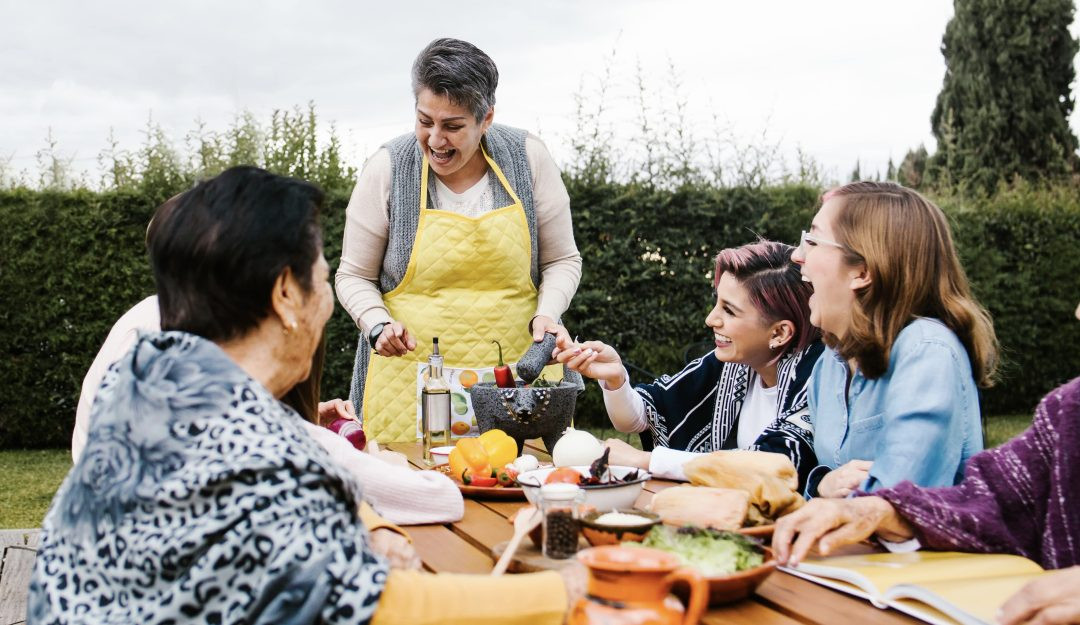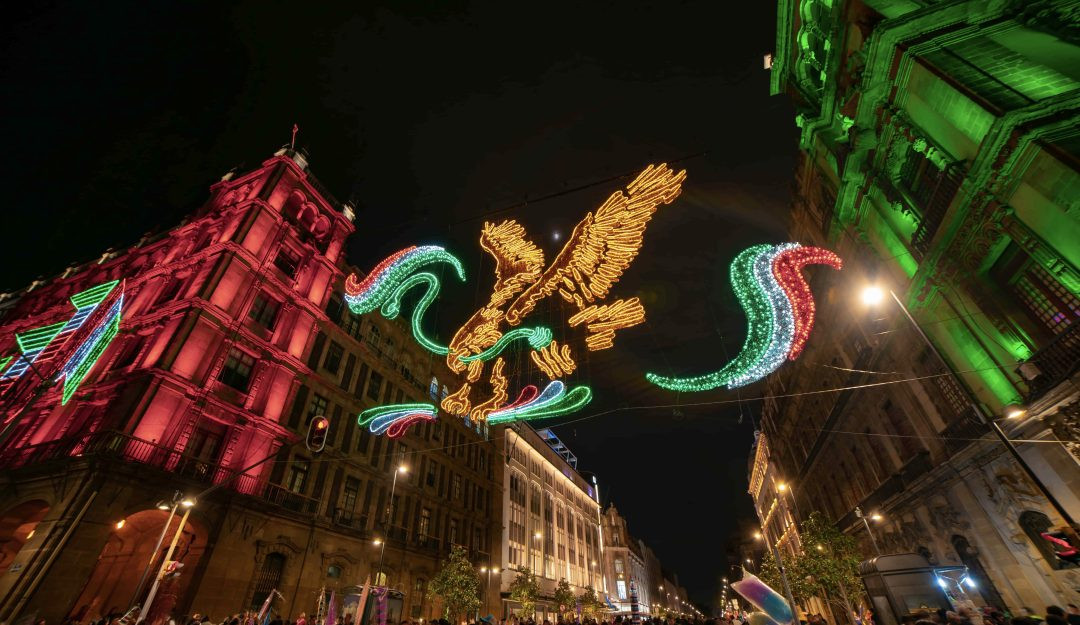Why Does Mexico Celebrate Independence Day? Mexico celebrates its Independence Day on September 16th to commemorate the beginning of its fight for freedom from Spanish rule, a pivotal moment celebrated with vibrant displays of national pride, which you can explore further on gaymexico.net. Discover LGBTQ+ friendly celebrations, events, and travel tips to experience the best of Mexico during this patriotic time. Dive into Mexico’s rich history, traditions, and LGBTQ+ culture to make your Independence Day trip unforgettable with our travel guides, community insights, and LGBTQ+ event listings.
1. Understanding Mexico’s Independence Day
Mexican Independence Day is more than just a holiday; it’s a celebration of national identity, resilience, and the long-fought struggle for self-determination. It is a time when the nation comes together to honor its history and cultural heritage.
When Is Mexican Independence Day?
Mexican Independence Day falls annually on September 16, regardless of the day of the week. Festivities commence on the evening of September 15, with preparations for “El Grito” beginning days in advance.
What is “El Grito de Dolores?”
“El Grito de Dolores” (The Cry of Dolores) is a reenactment of Father Miguel Hidalgo’s call to arms against Spanish rule in 1810. It’s a symbolic event that marks the beginning of the Mexican War of Independence.
How is “El Grito de Dolores” Celebrated?
On the night of September 15, government officials across Mexico, including the President in Mexico City, reenact “El Grito.” They recite a speech honoring the heroes of the independence movement, ending with “¡Viva México!” The crowd responds with enthusiastic shouts of “¡Viva México!” followed by the national anthem and fireworks.
How Long Does the Celebration Last?
The official celebration spans two days, September 15 and 16, but the entire month of September, known as “el Mes de la Patria,” is filled with patriotic fervor. Expect parades, cultural events, and special foods throughout the month.
2. The Historical Context: How Mexico Won Its Independence
Mexico’s path to independence was a complex and arduous journey marked by political upheaval, armed conflict, and the unwavering determination of its people. Understanding the historical context provides a deeper appreciation for the significance of Independence Day.
What Were the Key Factors Leading to Mexico’s Independence?
Several factors contributed to Mexico’s independence movement:
- Spanish Colonial Rule: For centuries, Mexico was under Spanish rule, which led to social and economic inequalities.
- Enlightenment Ideas: The spread of Enlightenment ideals of liberty and self-governance inspired many Mexicans to seek independence.
- Napoleon’s Invasion of Spain: Napoleon’s invasion of Spain in 1808 created a power vacuum and political instability that fueled the independence movement in Mexico.
Who Was Father Miguel Hidalgo and What Was His Role?
Father Miguel Hidalgo y Costilla, a Catholic priest, is considered the father of Mexican independence. On September 16, 1810, he delivered the “Grito de Dolores,” a passionate call to arms that ignited the Mexican War of Independence.
What Was the “Grito de Dolores?”
The “Grito de Dolores” was Father Hidalgo’s rallying cry for Mexicans to rise up against Spanish rule. It marked the beginning of the Mexican War of Independence, which lasted for over a decade.
What Were the Major Events in the Mexican War of Independence?
The Mexican War of Independence was a long and bloody conflict that involved numerous battles and political maneuverings. Some of the key events include:
- Father Hidalgo’s Rebellion: Hidalgo led a large but poorly equipped army that achieved initial victories but was eventually defeated.
- José María Morelos’ Leadership: After Hidalgo’s execution, José María Morelos took over the leadership of the independence movement and established a more organized army.
- The Plan de Iguala: In 1821, Agustín de Iturbide, a former Spanish officer, joined forces with the rebels and issued the Plan de Iguala, which called for an independent Mexico with a constitutional monarchy.
When Did Mexico Finally Achieve Independence?
Mexico finally achieved independence in 1821 with the signing of the Treaty of Córdoba, which recognized Mexico as an independent nation.
 mexican-family-gathered-around-the-dinner-table-making-fresh-guacamole
mexican-family-gathered-around-the-dinner-table-making-fresh-guacamole
3. Independence Day vs. Cinco de Mayo: What’s the Difference?
It’s a common misconception that Cinco de Mayo is Mexico’s Independence Day. While both holidays are significant in Mexican culture, they celebrate different events.
What Does Cinco de Mayo Celebrate?
Cinco de Mayo commemorates the Battle of Puebla in 1862, where the Mexican army defeated French forces. It’s a celebration of Mexican resistance against foreign intervention.
Is Cinco de Mayo a Major Holiday in Mexico?
While Cinco de Mayo is celebrated in Mexico, it is not as widely observed as Independence Day. It’s primarily celebrated in the state of Puebla, where the battle took place.
Why Is Cinco de Mayo More Popular in the United States?
Cinco de Mayo has become more popular in the United States as a celebration of Mexican-American culture and heritage. It’s often celebrated with parades, festivals, and traditional Mexican food and music.
How Do Independence Day and Cinco de Mayo Differ in Significance?
Independence Day is a celebration of Mexico’s sovereignty and freedom from Spanish rule, while Cinco de Mayo commemorates a specific battle against French forces. Independence Day is a much more significant holiday in Mexico, representing the birth of the nation.
4. Experiencing Independence Day in Mexico: Traditions and Festivities
Mexico’s Independence Day is a vibrant and exciting time to visit the country. Experiencing the traditions and festivities firsthand is a memorable way to immerse yourself in Mexican culture.
What Are the Key Traditions Associated With Independence Day?
Some of the key traditions associated with Independence Day include:
- “El Grito de Dolores” Reenactments: As mentioned earlier, this is a central event that takes place in cities and towns across Mexico.
- Parades: Military parades are common on September 16, showcasing Mexico’s armed forces and patriotic spirit.
- Fireworks: Fireworks displays light up the night sky, adding to the festive atmosphere.
- Traditional Music and Dance: Folkloric music and dance performances are a staple of Independence Day celebrations.
What Kind of Music and Dance Can You Expect to See?
Expect to hear traditional Mexican music such as mariachi, banda, and son jarocho. Folkloric dances, such as the Jarabe Tapatío (the national dance of Mexico), are also common.
What Traditional Foods Are Eaten During Independence Day?
Food plays a central role in Independence Day celebrations. Some of the most popular dishes include:
- Chiles en Nogada: Poblano peppers stuffed with meat and fruit, covered in walnut sauce and pomegranate seeds, representing the colors of the Mexican flag.
- Pozole: A hearty stew made with hominy and meat, typically pork or chicken.
- Tamales: Corn dough filled with various meats, cheeses, or vegetables, wrapped in corn husks or banana leaves.
Are There Specific Drinks Associated With the Holiday?
Tequila, Mexico’s national drink, is a popular choice. Another traditional drink is the “Bandera” (flag), consisting of three shot glasses filled with lime juice (green), tequila (white), and sangrita (red).
Where Are the Best Places to Experience Independence Day Celebrations in Mexico?
Major cities like Mexico City, Guadalajara, and Morelia offer large-scale celebrations. Smaller towns and villages also have their own unique festivities. Consider visiting Dolores Hidalgo, the birthplace of Mexican independence, for a particularly meaningful experience.
5. Celebrating Independence Day as an LGBTQ+ Traveler
Mexico is increasingly becoming a welcoming destination for LGBTQ+ travelers, and many cities offer vibrant and inclusive celebrations during Independence Day.
Which Cities in Mexico Are Known for Their LGBTQ+ Friendliness?
Some of the most LGBTQ+-friendly cities in Mexico include:
- Puerto Vallarta: A popular beach resort town with a thriving LGBTQ+ scene.
- Mexico City: The capital city offers a diverse range of LGBTQ+ venues and events.
- Guadalajara: Known for its cultural attractions and welcoming atmosphere.
- Cancun: A popular tourist destination with a growing LGBTQ+ presence.
Are There Specific LGBTQ+ Events or Parties During Independence Day?
Many LGBTQ+ bars and clubs in these cities host special events and parties during Independence Day. Check local listings and online resources like gaymexico.net for details.
What Safety Tips Should LGBTQ+ Travelers Keep in Mind?
While Mexico is generally becoming more accepting, it’s important to be aware of local customs and attitudes. Exercise caution in more conservative areas and avoid public displays of affection in certain settings.
How Can LGBTQ+ Travelers Find LGBTQ+-Friendly Accommodations and Businesses?
Websites like gaymexico.net offer listings of LGBTQ+-friendly hotels, restaurants, bars, and other businesses. Look for accommodations that are TAG Approved® or members of LGBTQ+ travel organizations.
 lights-shaped-like-an-eagle-hanging-over-the-streets-of-mexico-city
lights-shaped-like-an-eagle-hanging-over-the-streets-of-mexico-city
6. Exploring LGBTQ+ Culture in Mexico
Mexico has a rich and diverse LGBTQ+ history and culture, which is becoming increasingly visible and celebrated.
What Is the History of LGBTQ+ Rights in Mexico?
Mexico has made significant progress in LGBTQ+ rights in recent years, including the legalization of same-sex marriage and adoption in many states. However, discrimination and violence against LGBTQ+ people still exist.
Are There Any Prominent LGBTQ+ Figures in Mexican History or Culture?
Yes, there are many prominent LGBTQ+ figures in Mexican history and culture, including artists, writers, activists, and politicians. Some notable examples include:
- Frida Kahlo: The iconic Mexican painter, who was bisexual and challenged gender norms.
- Carlos Monsiváis: A renowned writer and intellectual who documented LGBTQ+ life in Mexico City.
- Nancy Cárdenas: An early LGBTQ+ activist who fought for LGBTQ+ rights in Mexico.
What Are Some Important LGBTQ+ Organizations in Mexico?
Several organizations are working to promote LGBTQ+ rights and equality in Mexico, including:
- CONAPRED: The National Council to Prevent Discrimination.
- Letra S: A leading LGBTQ+ rights organization in Mexico City.
- Alianza Diversidad Sexual: A network of LGBTQ+ organizations throughout Mexico.
Where Can You Find LGBTQ+ Art, Literature, and Film in Mexico?
Mexico City has a vibrant LGBTQ+ art scene, with numerous galleries and museums showcasing LGBTQ+ artists. Look for LGBTQ+ bookstores and film festivals in major cities.
7. Travel Tips for a Safe and Enjoyable Trip
Planning a trip to Mexico requires careful consideration of safety and cultural factors. Here are some tips to ensure a safe and enjoyable experience.
What Are Some General Safety Tips for Traveling in Mexico?
- Be Aware of Your Surroundings: Pay attention to your surroundings and avoid walking alone in unfamiliar areas, especially at night.
- Avoid Displaying Wealth: Dress modestly and avoid wearing expensive jewelry or accessories.
- Use Reputable Transportation: Use licensed taxis or ride-sharing services and avoid accepting rides from strangers.
- Stay Informed: Stay up-to-date on travel advisories and news reports.
Are There Any Specific Safety Concerns for LGBTQ+ Travelers?
While Mexico is generally becoming more accepting, it’s important to be aware of potential risks. Avoid public displays of affection in conservative areas and be cautious when interacting with strangers.
What Are Some Cultural Considerations to Keep in Mind?
- Learn Basic Spanish Phrases: Knowing basic Spanish phrases will help you communicate with locals and show respect for their culture.
- Dress Appropriately: Dress modestly when visiting religious sites or conservative areas.
- Be Respectful of Local Customs: Be aware of local customs and traditions and avoid behavior that could be considered offensive.
- Tip Appropriately: Tipping is customary in Mexico for services such as restaurants, taxis, and hotel staff.
What Documents Do You Need to Travel to Mexico?
U.S. citizens need a valid passport to enter Mexico. Depending on your nationality, you may also need a visa. Check the Mexican embassy or consulate website for specific requirements.
8. Planning Your Independence Day Trip with gaymexico.net
gaymexico.net is your comprehensive resource for planning an unforgettable and LGBTQ+-friendly Independence Day trip to Mexico.
How Can gaymexico.net Help You Plan Your Trip?
gaymexico.net offers a wealth of information and resources, including:
- LGBTQ+ Travel Guides: Detailed guides to LGBTQ+-friendly destinations in Mexico.
- Event Listings: Up-to-date information on LGBTQ+ events and parties.
- Accommodation Listings: Listings of LGBTQ+-friendly hotels, guesthouses, and vacation rentals.
- Business Directory: A directory of LGBTQ+-owned and LGBTQ+-friendly businesses.
- Community Forums: Connect with other LGBTQ+ travelers and locals for advice and recommendations.
What Kind of Information Can You Find on gaymexico.net?
You can find information on everything from LGBTQ+ nightlife and cultural attractions to safety tips and travel advice.
Are There Any Specific Guides or Articles Related to Independence Day Celebrations?
gaymexico.net will feature specific guides and articles related to Independence Day celebrations, including information on LGBTQ+ events, parties, and cultural activities.
How Can You Connect With Other LGBTQ+ Travelers on gaymexico.net?
Join the community forums to connect with other LGBTQ+ travelers, share your experiences, and get advice and recommendations.
9. Embracing the Spirit of “Viva Mexico”
Mexico’s Independence Day is a time to celebrate the country’s rich history, culture, and the spirit of its people.
What Does “Viva Mexico” Mean?
“Viva Mexico” translates to “Long Live Mexico.” It’s a patriotic expression of pride and love for the country.
How Can You Show Your Respect and Appreciation for Mexican Culture?
- Learn About Mexican History and Culture: Take the time to learn about Mexico’s rich history and diverse culture.
- Support Local Businesses: Support local businesses and artisans by purchasing their products and services.
- Participate in Cultural Events: Attend cultural events and festivals to immerse yourself in Mexican traditions.
- Be Respectful of Local Customs: Be aware of local customs and traditions and avoid behavior that could be considered offensive.
How Can You Experience the True Meaning of Independence Day?
Attend “El Grito” reenactments, watch parades, listen to traditional music, and try traditional foods. Most importantly, connect with the Mexican people and share in their patriotic spirit.
How Can You Continue to Support LGBTQ+ Rights in Mexico?
Support LGBTQ+ organizations in Mexico, advocate for LGBTQ+ equality, and speak out against discrimination and violence.
10. Frequently Asked Questions (FAQs) About Mexico’s Independence Day
Here are some frequently asked questions about Mexico’s Independence Day:
Why Does Mexico Celebrate Independence Day on September 16th?
Mexico celebrates Independence Day on September 16th because that was the date Father Miguel Hidalgo issued the “Grito de Dolores” in 1810, sparking the Mexican War of Independence.
Is Mexico’s Independence Day the Same as Cinco de Mayo?
No, Mexico’s Independence Day is not the same as Cinco de Mayo. Independence Day celebrates Mexico’s independence from Spain, while Cinco de Mayo commemorates the Battle of Puebla against French forces.
What Is “El Grito de Dolores?”
“El Grito de Dolores” is the reenactment of Father Miguel Hidalgo’s call to arms against Spanish rule, which takes place on the night of September 15th.
What Are Some Traditional Foods Eaten During Independence Day?
Some traditional foods eaten during Independence Day include chiles en nogada, pozole, and tamales.
Where Are the Best Places to Experience Independence Day Celebrations in Mexico?
Major cities like Mexico City, Guadalajara, and Morelia offer large-scale celebrations, but smaller towns and villages also have their own unique festivities.
Is Mexico a Safe Destination for LGBTQ+ Travelers?
Mexico is increasingly becoming a welcoming destination for LGBTQ+ travelers, but it’s important to be aware of local customs and attitudes and exercise caution in more conservative areas.
How Can I Find LGBTQ+-Friendly Accommodations and Businesses in Mexico?
Websites like gaymexico.net offer listings of LGBTQ+-friendly hotels, restaurants, bars, and other businesses.
What Are Some Important LGBTQ+ Organizations in Mexico?
Some important LGBTQ+ organizations in Mexico include CONAPRED, Letra S, and Alianza Diversidad Sexual.
What Documents Do I Need to Travel to Mexico?
U.S. citizens need a valid passport to enter Mexico. Depending on your nationality, you may also need a visa.
How Can I Show My Respect and Appreciation for Mexican Culture?
Learn about Mexican history and culture, support local businesses, participate in cultural events, and be respectful of local customs.
Mexico’s Independence Day is a time for celebration, reflection, and national pride. Whether you’re a seasoned traveler or planning your first trip, gaymexico.net can help you create an unforgettable experience. Visit gaymexico.net, Address: 3255 Wilshire Blvd, Los Angeles, CA 90010, United States. Phone: +1 (213) 380-2177, and start planning your adventure today!
